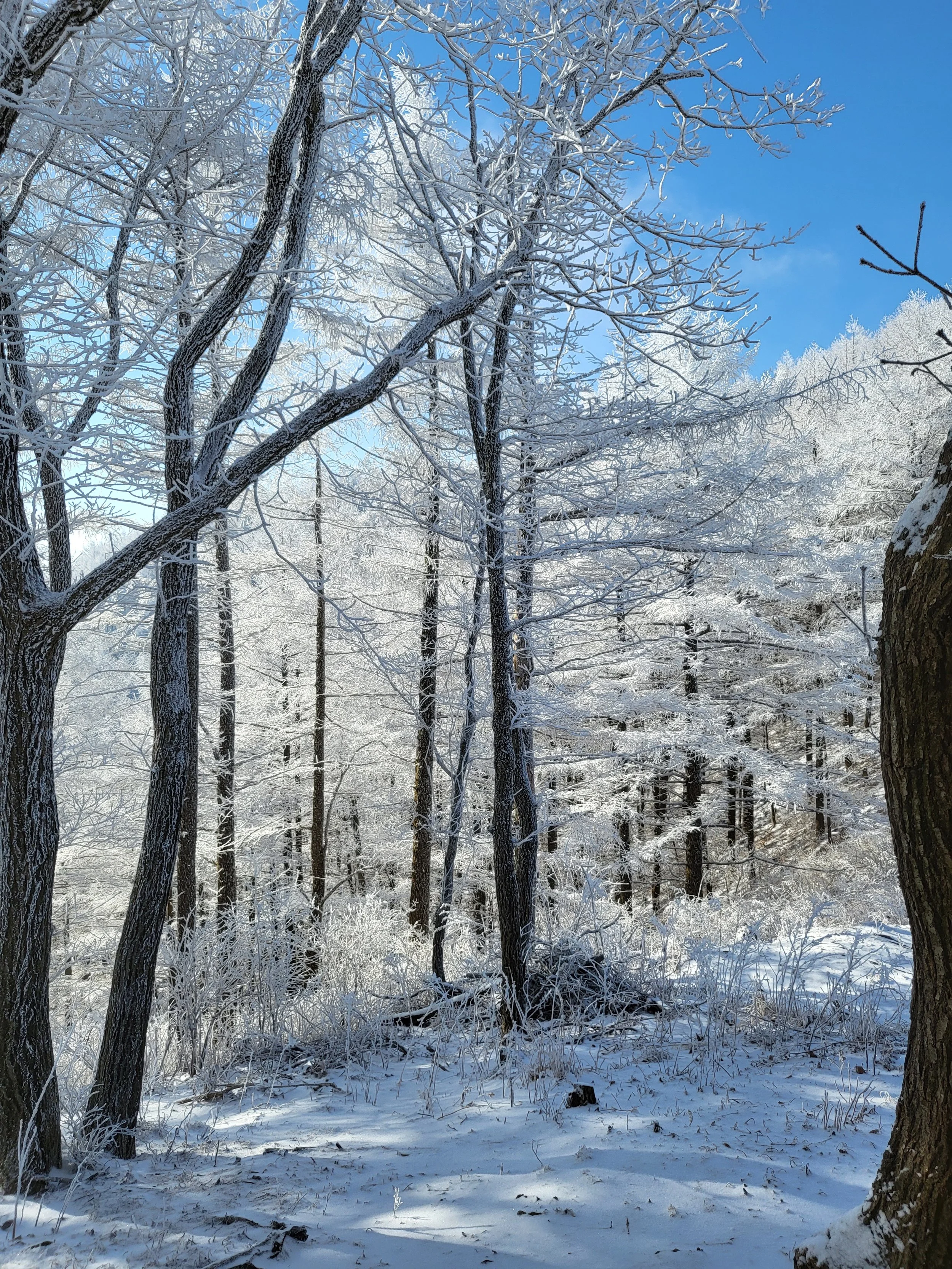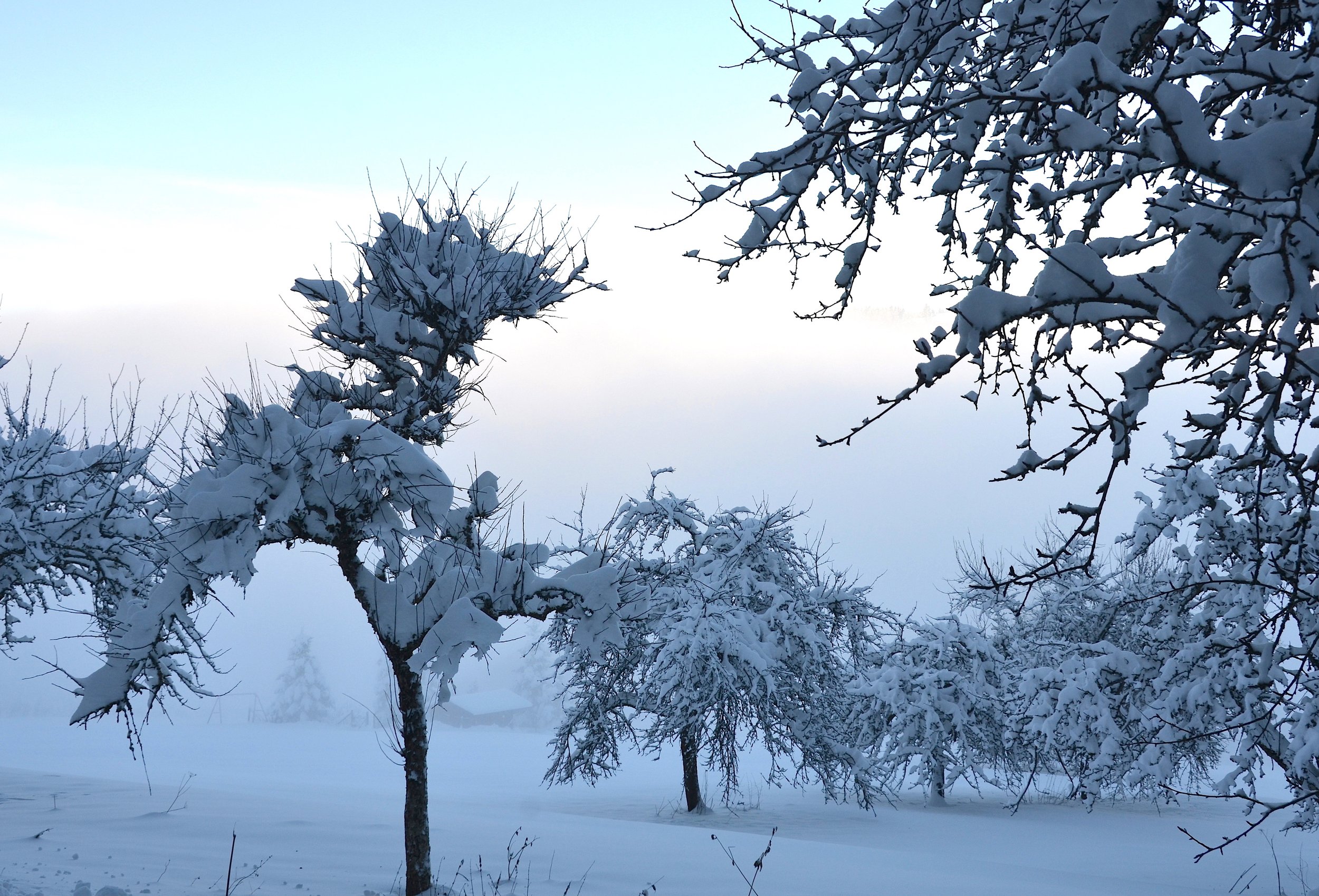By Olga Ernst - Own work, CC BY-SA 4.0, https://commons.wikimedia.org/w/index.php?curid=75241131
The Trees are heavy with snow William Alwyn Grade 1 ABRSM 2023 – 2024
Character/story of the piece – obviously the best place to start regarding the interpretation of this piece is the title. It is a wonderfully evocative piece, and at times it sounds mercurial and unpredictable. Perhaps the player could either imagine a painting or themselves walking though a forest in a snowstorm. In bars 1 – 4, the person is walking towards the forest with the snow starting to fall, in bars 5 – 8 the person is now in the forest with the snow falling on different trees, by bars 9 -12 the snow is falling more heavily with the L.H. depicting the person trudging through the snow, in bars 13 and 14 the person stops walking and looks at the trees with drooping branches heavy with snow and from bars 15 to the end, the person is walking out of the forest, with the L.H. depicting snow gently falling.
Form – this piece is in a free-flowing form with many melodic ideas overlapping from one phrase to the following or using melodic fragments that were present in a previous phrase. Although the piece is in A minor, the music has a rather sparse quality which is partly because, from the beginning until bar 14 the hands remain in the same position covering the first five notes of the A minor scale. At bar 15 the L.H. moves to a slightly higher position, and the L.H. oscillates between G and G sharp alternating with E.
Main part of the music – there may be a difference of opinion concerning where the main part of the music is in this piece. Clearly it needs to occur later rather than sooner in the piece, so at the start of bar 13 would be appropriate. Considering the character of this piece it would be best to use a mezzoforte dynamic at this point. Primarily the dynamics used in this piece should remain within a ppp and mezzoforte range.
Phrasing – there are four phrases in this piece, the first two phrases are four bars long whilst the following two phrases are six bars long. The phrases in this piece do not present in pairs, the melodic ideas flow from one phrase to the next but no two phrases complement or balance each other.
Tempo, time signature and rhythmic patterns - a tempo of 104 crotchet beats per minute is appropriate for the style and character of the piece. There is a danger that once the player becomes familiar with this piece, the speed accelerates as a result. Obviously too fast a speed will affect the character of the piece as much as too slow a speed would too. There are no rhythmic patterns that could potentially cause any difficulty although the player must ensure that the quaver patterns are even and controlled.
Touch/articulation – considering the character and style of the music, as well as the indication at the start of ‘quiet and expressive’, a cantabile touch is required. This applies to both hands, because in some phrases the L.H. has a melodic role to play. The chord patterns, for example in the L.H. in bars 9 – 12 and in the R.H. in bars 13 and 14, must sound as legato and cantabile as is possible considering the repeated notes from one chord to the subsequent one. The player must use fluid gestures when lifting at the end of melodic parts. Alwyn has marked numerous slur marks which must be followed as written. The composer has written in legato in bar 15; perhaps he is reminding the player to play with a legato touch after the slightly detached sound that would have occurred when playing the chords in bars 13 and 14.
By About672599 - Own work, CC BY-SA 4.0, https://commons.wikimedia.org/w/index.php?curid=117693075
Balance between the hands – the only areas in this piece where the R.H. has the balance are bars 9 – 12 and bars 15 – 19. Nevertheless, this does not mean that the L.H. does not have an important role to play as the L.H.’s dynamics will contribute to the overall sound. In the other areas, the L.H. is part of the melody, for example as in the first phrase, or must be highlighted as in bars 6 and 8.
Dynamics – as discussed before the dynamics used in this piece range from ppp to mezzoforte. This piece requires considerable skill in tone-matching throughout. Tone-matching is complicated by the slower tempo, the use of quieter dynamics and, in some cases, a dimunendo required when playing an additional note each time in bars 13 and 14. Even though the dynamics are primarily quiet the tone should never sound thin or lacking in resonance. The third phrase contains the largest range of dynamics; this will contribute to the drama of this phrase. In this phrase the L.H. dictates the dynamics. The player must carefully consider the dynamic level from one phrase to the following, should it be more, less or equal dynamically. At times, there will be sudden changes in dynamics. Considering the style, the player must have a different mindset when thinking about the dynamics for this piece. Alwyn has provided several dynamic markings in this piece; the player could add some of his own and/or alter any dynamic markings that they see fit.
Rubato – a little more rubato could be added to this piece, however the player must keep in mind that, to a certain extent, the composer has written in some rubato such as the poco rit. in bar 13 and the rall. In bar 18. In addition to what Alwyn has written, a slight accelerando in bar 10 and a slight easing of the tempo in bar 12 would be appropriate.
Considerations when playing this piece -
· Do the slurs imitate the moving up and down of the branches with the weight of the snow?
· The G# in the L.H. in the penultimate bar is an important note as it is the leading note of A minor.
· Some players may find it a little hard to adjust to the fact that the L.H. is being played around the middle C area and having to read the L.H. in the treble clef.
· Perhaps the player could move a little to the right on the piano stool so that they can easily access the required register on the piano.
· The player must ensure that they lift both hands off at the end with a fluid gesture with the fingers touching the keys to avoid any ‘clunking’ sound as the keys return to their resting position. This is the same for bar 18 too.
· The pedal touches in the final two bars may be a little complex for a Grade 1 player and in some cases, a Grade 1 player may not be able to reach the pedal anyway.
· The minim notes in the R.H. in the first phrase must be carefully considered as well as the L.H. chord that follows.
· There must be a contrast in the playing in bars 15 and 16 and bars 17 and 18. In bars 17 and 18 the music should sound as if the player is moving further away from the forest.
· In the final bar the player should wait for the L.H. A to ‘emerge’ from the overall sound before lifting their hands gently off the keys.
· The player needs to check the L.H. notes in bar 4 as there is a danger that this chord could be played incorrectly.
· The player needs to seamlessly pass the melody from one hand to the other in bars 1 – 4. Another layer of complexity is added because the melodic note in the L.H. is part of a chord.
· There is a danger that some of the chords may split.
· The player must ensure that the hands do not overlap, such as in bar 1 and bar 2. There is a danger that the player may hold the L.H. chord into bar 2.
· The single line at the beginning must have direction,



